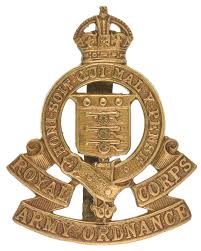Personal Details
Born: 28 August 1895 in Whitchurch, Shropshire and baptised on 11 September that year in St. Alkmund’s Parish Church.
Family: He was the seventh of eight children born to Samuel Jarman, a cabinet maker, and his wife Martha. He married Emily Huxley on 19 May 1920 in Bronington Parish Church, Flintshire and together they had three children – Margaret, Elsie M and Dorothy Mary.
Residence: In 1901 he was living in the Union Workhouse in Whitchurch; in 1911 he was living with his parents and siblings at 8 Sherrymill Hill, Whitchurch, the address shown for him on the 1919 Absent Voters’ Register. In 1930 and 1931 he was living with his wife and children in The Square, Church Hulme, Knutsford, Cheshire and by 1939 they had moved to 2 Webb’s Lane, Middlewich, Cheshire, where he was living at the time of his death.
Employment: In 1911 he was an errand boy and in 1939 a fish and fruit salesman.
Died: 23 February 1947 in Northwich, Cheshire, aged 51.
Military Details
Regiment: Royal Army Ordnance Corps
Rank: Sergeant
Service Number: 09926
Date of Enlistment: Not known
Date of Discharge: 12 August 1919
Reason for Discharge: To reserve
Wilfred was awarded the Campaign Medals (British War Medal, and Victory Medal).

The British War Medal (also known as 'Squeak') was a silver or bronze medal awarded to officers and men of the British and Imperial Forces who either entered a theatre of war or entered service overseas between 5th August 1914 and 11th November 1918 inclusive. This was later extended to services in Russia, Siberia and some other areas in 1919 and 1920. Approximately 6.5 million British War Medals were issued. Approximately 6.4 million of these were the silver versions of this medal. Around 110,000 of a bronze version were issued mainly to Chinese, Maltese and Indian Labour Corps. The front (obv or obverse) of the medal depicts the head of George V. The recipient's service number, rank, name and unit was impressed on the rim.
The Allied Victory Medal (also known as 'Wilfred') was issued by each of the allies. It was decided that each of the allies should each issue their own bronze victory medal with a similar design, similar equivalent wording and identical ribbon. The British medal was designed by W. McMillan. The front depicts a winged classical figure representing victory. Approximately 5.7 million victory medals were issued. Interestingly, eligibility for this medal was more restrictive and not everyone who received the British War Medal ('Squeak') also received the Victory Medal ('Wilfred'). However, in general, all recipients of 'Wilfred' also received 'Squeak' and all recipients of The 1914 Star or The 1914/1915 Star (also known as 'Pip') also received both 'Squeak' and 'Wilfred'. The recipient's service number, rank, name and unit was impressed on the rim.

